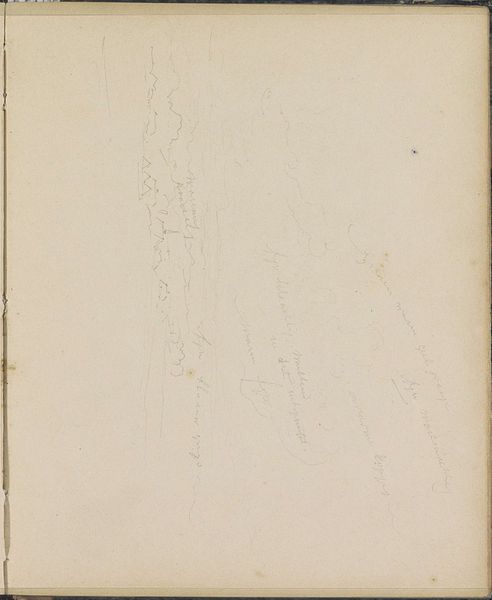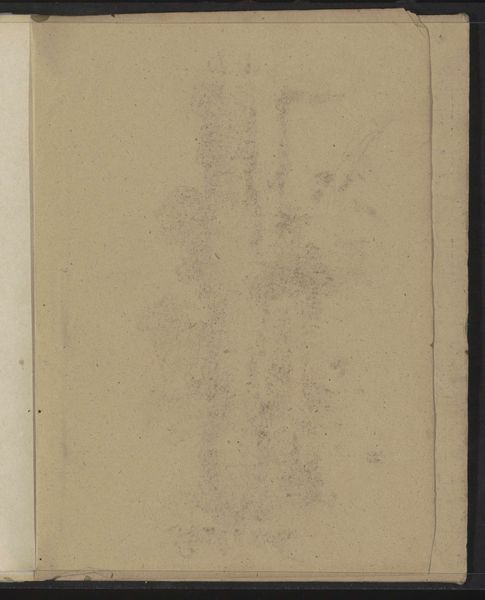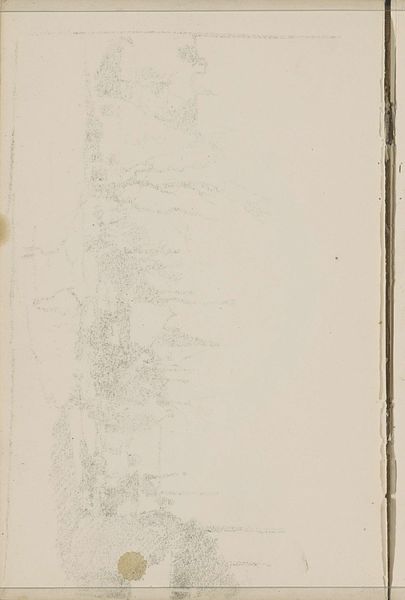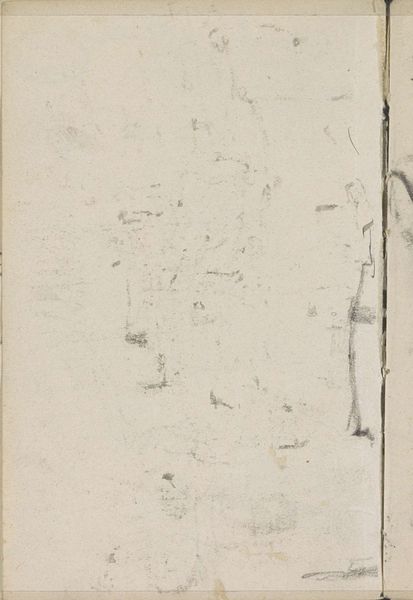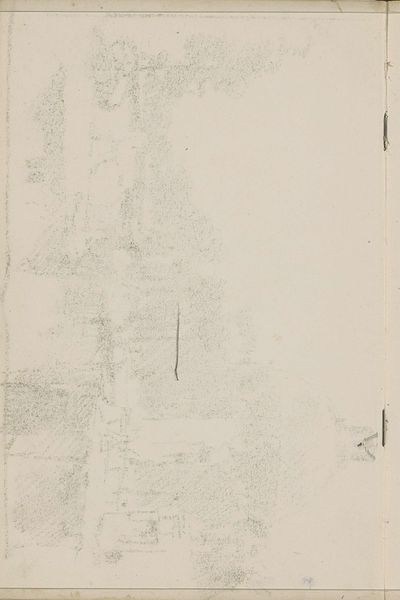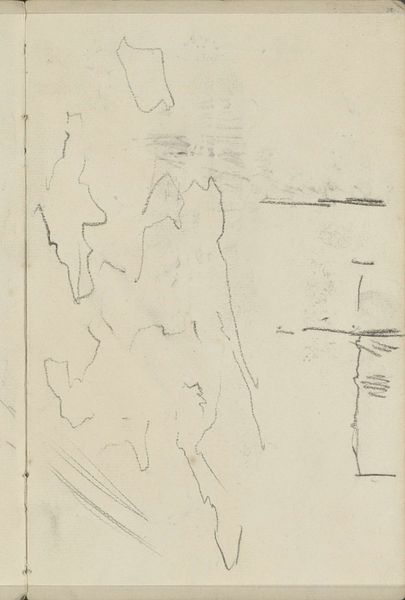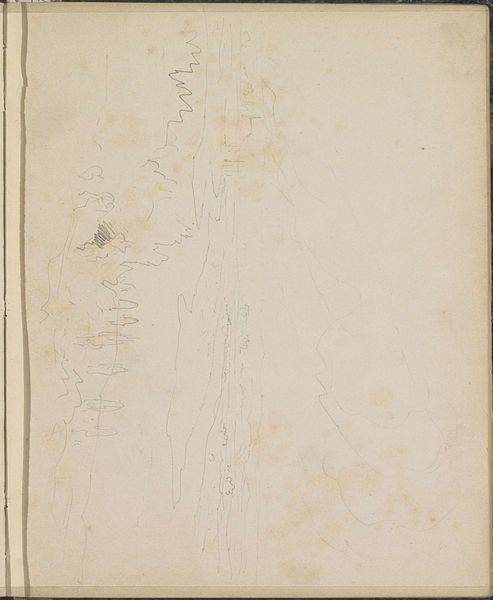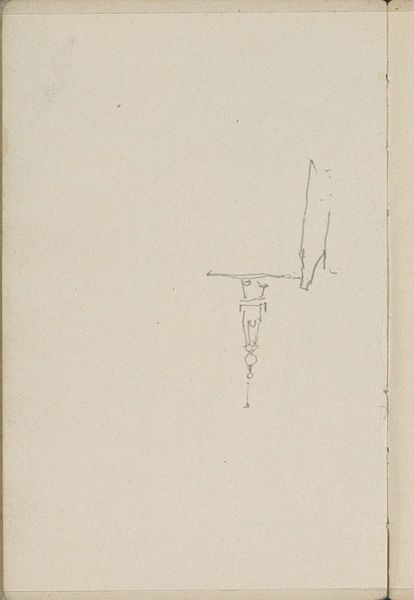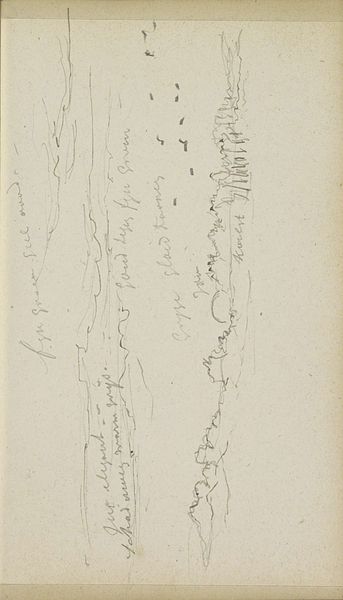
Copyright: Rijks Museum: Open Domain
Curator: At the Rijksmuseum, we have a drawing titled "Stadsgezicht," or "Cityscape," created by George Hendrik Breitner sometime between 1914 and 1923, utilizing pencil on paper. Editor: My first thought is of faded memory. The lines are so delicate, almost ephemeral, like a dream barely recalled. Curator: Indeed. Note how Breitner employs the pencil not just to delineate form but to evoke a sense of atmosphere. The strategic smudging and varied pressure create depth and texture despite the piece's minimalist quality. Consider also the function of the paper’s weave, disrupting and unifying the elements of its composition. Editor: It's like he's chasing a feeling rather than documenting a place. You know, it reminds me of trying to capture the scent of rain in a jar. Impossible, but the trying, the attempt—that's the art. What do you see happening along that implied horizon? Is there an event taking place? Curator: Perhaps, though what intrigues me more is how Breitner fractures space. The fragmented buildings, reduced to their barest outlines, become abstract shapes, prompting a conversation on the relationship between representation and abstraction, almost proto-cubist if one insists. We could invoke Bergson on duration… Editor: Or, maybe he just had a shaky hand that day! Seriously though, isn't it about the feeling it gives *us* now? To me it whispers something unfinished, alive. I like art you can complete yourself in your imagination. Curator: A valid, affective point, but I would steer us back toward appreciating the sophisticated economy of line, the controlled chaos… Editor: All art is chaos in a controlled manner. And control doesn't necessarily translate to excellence. Anyway, I appreciate this brief moment captured—Breitner wasn't precious or overbearing in making this, and its incompleteness brings such interesting energy to my experience. Curator: An appropriately spirited summation. Breitner’s impressionistic leanings allowed for a formal fluidity which still provokes lively discussion, and it invites new avenues of formal analysis today.
Comments
No comments
Be the first to comment and join the conversation on the ultimate creative platform.
